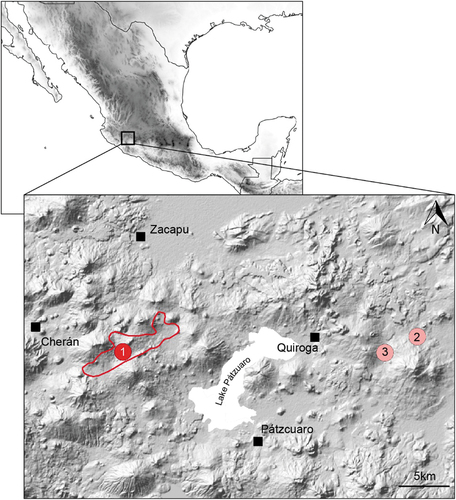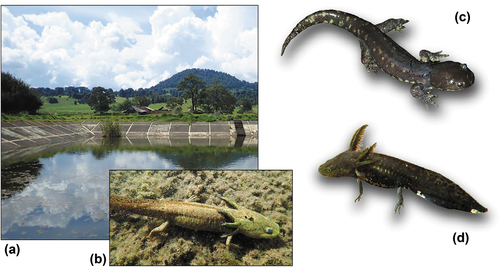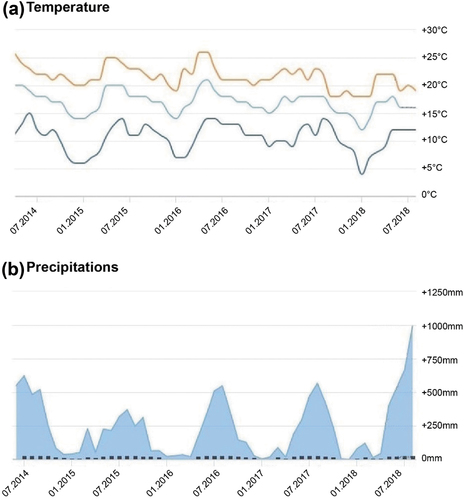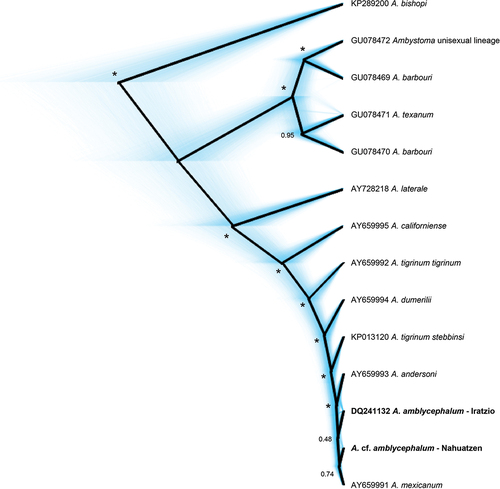Figures & data
Figure 1. Area survey in this study (red), with approximate location of the discovered Nahuatzen population assigned to Ambystoma cf. amblycephalum in 2018 (marker 1), as well the two other scientifically documented records: the type locality of A. amblycephalum described by Citation22 (marker 2), and the origin of the genetic sample included in Citation17 (marker 3).

Figure 2. (a) The breeding site of A. cf. amblycephalum at Nahuatzen, and photographs of (b) a paedomorphic adult; (c) a terrestrial adult; (d) a tadpole.

Table 1. Measurements of adults related to Ambystoma amblycephalum (in mm). The first three compose the type series of the species [Citation22]; the following seven are the new specimens caught at Nahuatzen. F = female; M = male; L = larvae; SVL = snout-vent length; TL = total length; TAL = tail length; HW = head width; HL: head length; LAL: leg length; SL = snout length; ND = nostril diameter; IN = inter-nostril distance
Figure 3. Climatic records of the Nahuatzen area over the 2014–2018 period. (a) Maximum (red), average (light blue) and minimum (dark blue) temperatures (c); (b) Precipitation (mm, blue areas) and rainy days (black histograms).

Table 2. Ranges of air temperature and water chemistry in the aquatic sites of A. cf. amblycephalum compared to other Ambystomatids observed during the survey [Citation37]
Figure 4. A. tigrinum stebbinsi of the Bayesian phylogenetic reconstruction of available Ambystoma mitochondrial sequences (concatenated 16S + control region = 1,296bp). Supported branches (posterior probability >0.95) are indicated by asterisks. The matriline of the Nahuatzen population groups with A. amblycephalum and A. mexicanum.

Figure 5. Bayesian phylogeny (maximum clade-credibility tree) of the mitochondrial control region [755bp) from Nahuatzen and other Ambystoma sequences from the study of Citation30. Supported branches (posterior probability >0.95] are indicated by asterisks.
![Figure 5. Bayesian phylogeny (maximum clade-credibility tree) of the mitochondrial control region [755bp) from Nahuatzen and other Ambystoma sequences from the study of Citation30. Supported branches (posterior probability >0.95] are indicated by asterisks.](/cms/asset/b8601fcb-6427-4371-bbfb-dc42bf5c4865/tneo_a_2029323_f0005_b.gif)
